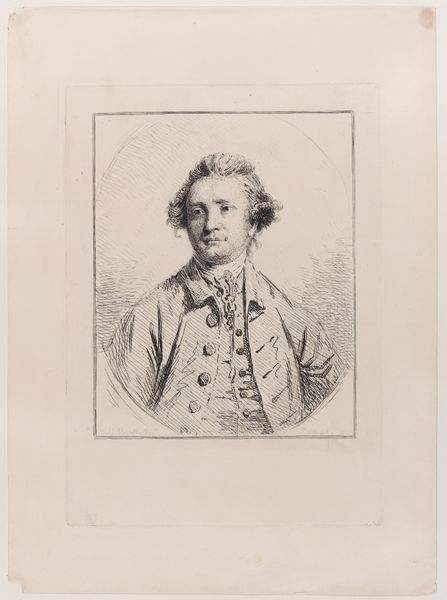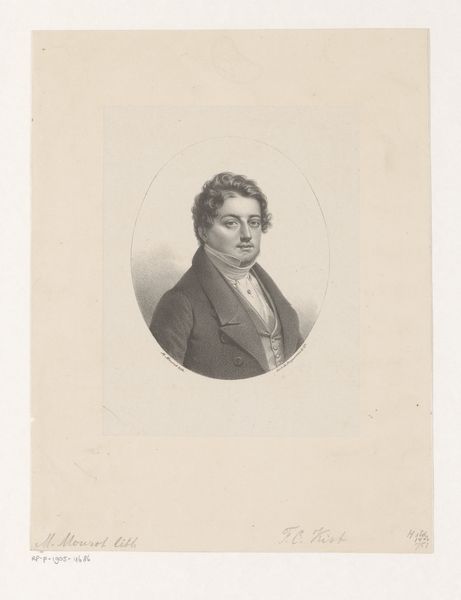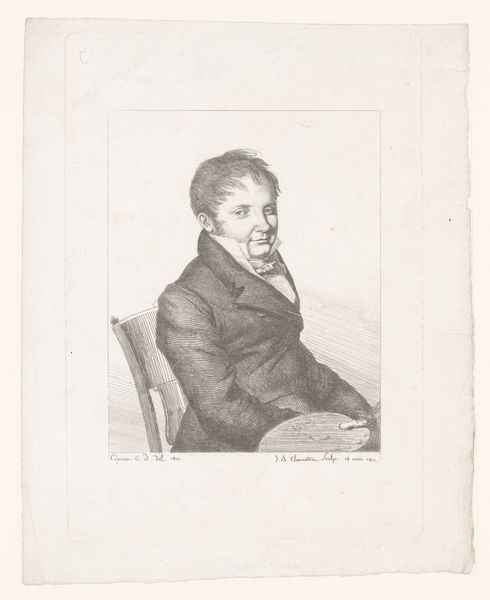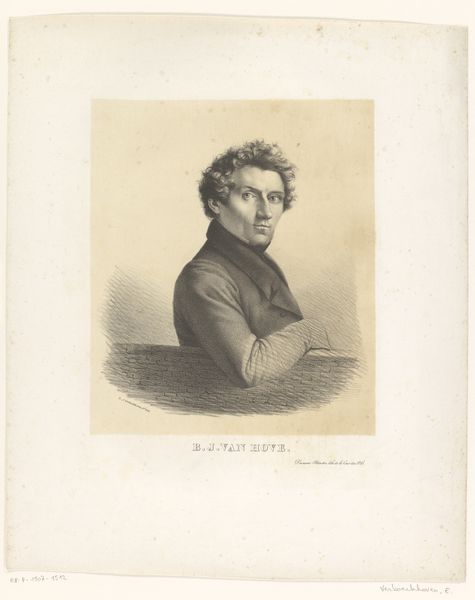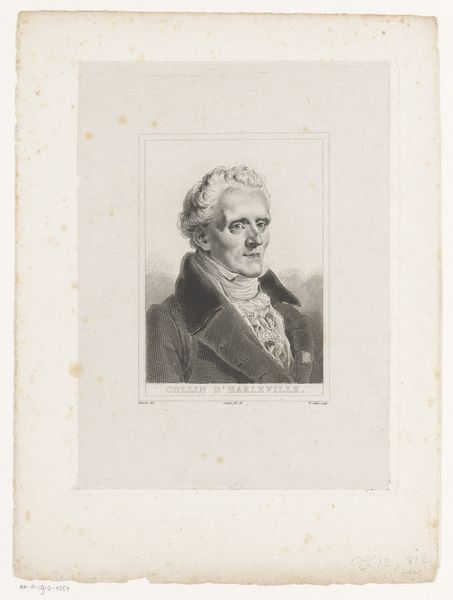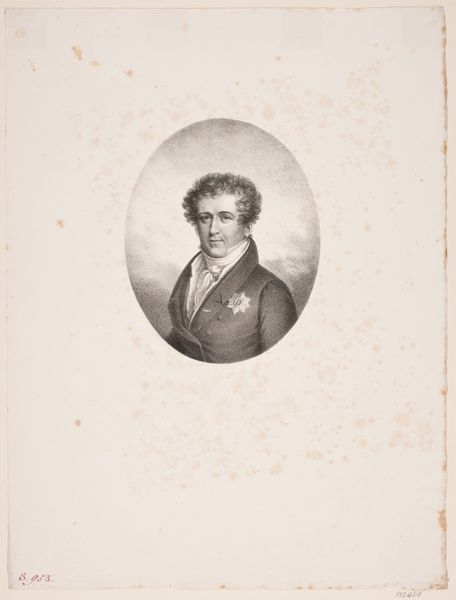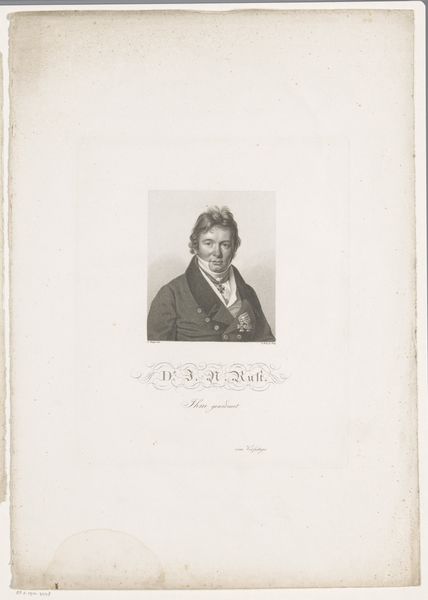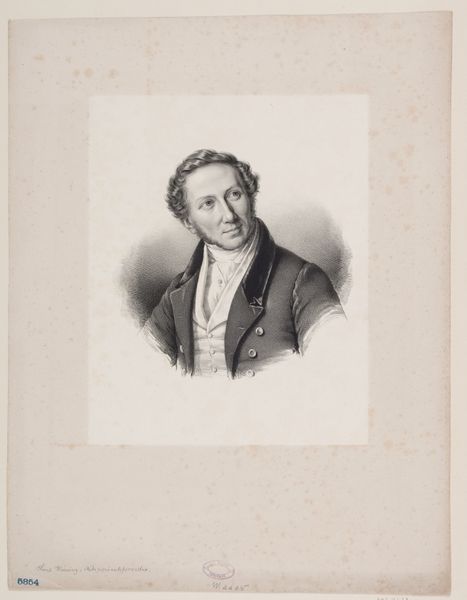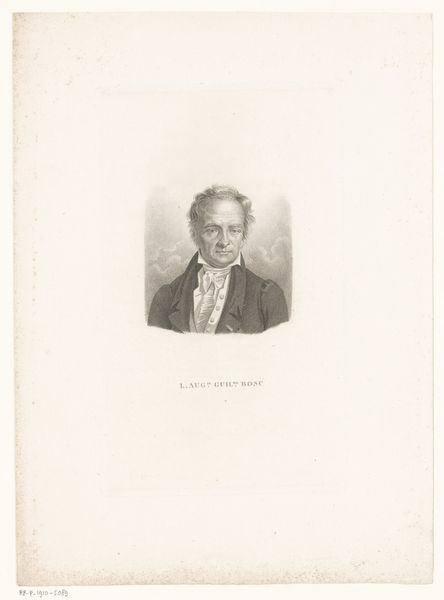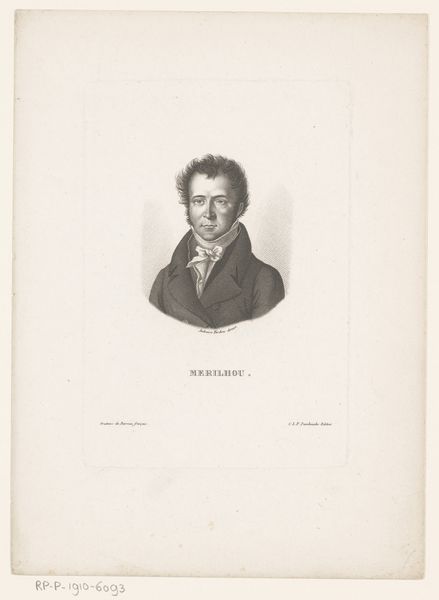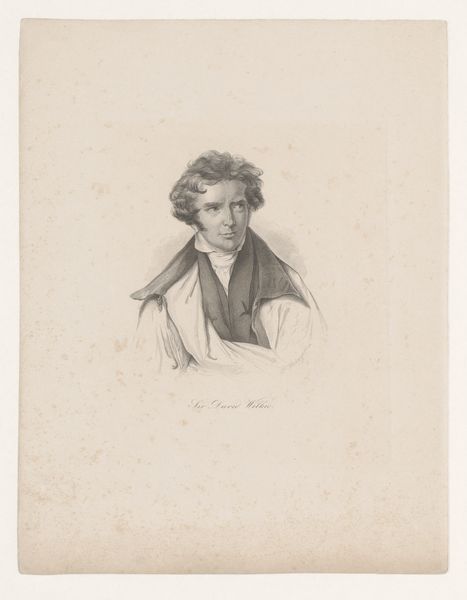
lithograph, print
#
portrait
#
lithograph
# print
#
romanticism
#
history-painting
#
academic-art
Dimensions: 243 mm (height) x 196 mm (width) (plademaal)
Curator: Allow me to introduce Wilhelm Heuer’s lithograph, “Christian VIII som prins,” created sometime between 1786 and 1855. Editor: My first thought is that this work exudes an air of restrained authority. The sitter seems self-possessed, his gaze direct, but not confrontational. The grayscale contributes to its formal feeling, focusing my attention on shape, texture, and pose. Curator: Indeed, the pose and grayscale serve to emphasize form. Note the elegant flow of line describing the fall of the drapery and the confident composition—see how the placement and rendering guide our eye deliberately? This work very much belongs to the Romantic period, leaning on conventions that place a central figure firmly in space. Editor: Looking at the work within its historical context, it seems like a piece created with a distinct political purpose in mind. I can see it adorning public buildings, used as a reminder of a person's rank in society. It's more than a pretty picture, it is evidence of social hierarchies, reinforcing them through visual language. How fascinating that such seemingly simple portraits, in their time, communicated so much about status, legacy, and legitimacy. Curator: Your point is well-made: there's definitely that dimension here. I would say it also stands up as a piece of art beyond that function, given its attention to textures. Just observe the soft rendering of his hair against the relatively firm fabric of his jacket. The balance creates visual interest, independent of any symbolic intent. Editor: Ultimately, this artwork connects the personal and the political so closely it becomes difficult to separate them. It is the mark of this society written plainly on the artwork's surface, not merely a representation, but a statement about history as well. Curator: I agree; it is a delicate interaction, one of careful rendering and historical messaging meeting, perhaps even conflicting at times. Editor: I feel my understanding has evolved to appreciate the different dimensions this portrait touches, how both the subject and society are co-created. Curator: And that is precisely where the dialogue between structure and purpose often creates something unexpected and meaningful for us now.
Comments
No comments
Be the first to comment and join the conversation on the ultimate creative platform.

